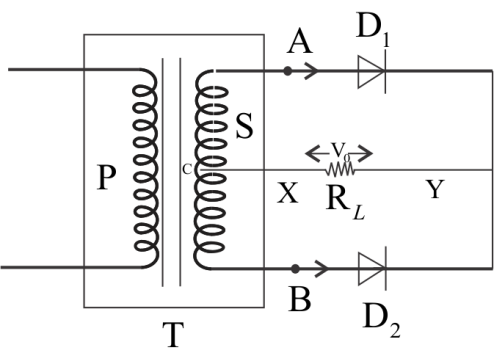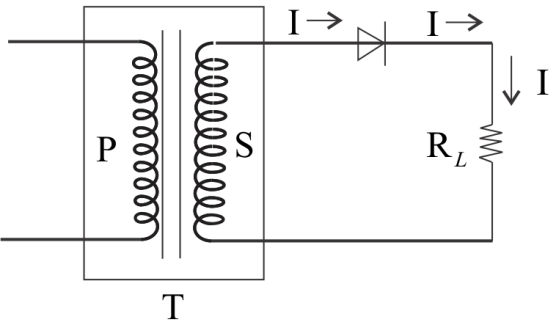
Suggest an idea to convert a full wave bridge rectifier to a half wave rectifier by changing the connecting wires. Draw the diagram and explain your answer.
Answer
515.4k+ views
Hint: To convert a full wave bridge rectifier to half wave rectifier, we need only one diode’s output, for achieving this condition, we should change the connection of resistance. The resistance blocks the working of one diode, thus we will get output from only one diode.
Complete step by step answer:
To understand this question first we need to understand what is a half wave rectifier so, the half wave rectifier is defined as a type of rectifier that allows only one half-cycle of an
The full wave rectifier has two diodes, so to convert it into a half wave rectifier, we simply have to change the connection of resistance, such that currents flow from one diode stops, and the final current flows only through one diode.
That considers a full wave rectifier and then we see how we can convert it.
Figure:

If we can see the figure, we see
Then the diode

We can consider the half wave rectifier as the simplest form of rectifier. We always use only a single diode to construct the half wave rectifier.
Additional Information: The half wave rectifier is made up of an
Note: A rectifier that utilizes both the negative and the positive half of the input signal and undergoes rectification is known as a full-wave rectifier. The average value of the output of the full-wave rectifier is higher when compared to that of a half-wave rectifier.
Complete step by step answer:
To understand this question first we need to understand what is a half wave rectifier so, the half wave rectifier is defined as a type of rectifier that allows only one half-cycle of an
The full wave rectifier has two diodes, so to convert it into a half wave rectifier, we simply have to change the connection of resistance, such that currents flow from one diode stops, and the final current flows only through one diode.
That considers a full wave rectifier and then we see how we can convert it.
Figure:

If we can see the figure, we see
Then the diode

We can consider the half wave rectifier as the simplest form of rectifier. We always use only a single diode to construct the half wave rectifier.
Additional Information: The half wave rectifier is made up of an
Note: A rectifier that utilizes both the negative and the positive half of the input signal and undergoes rectification is known as a full-wave rectifier. The average value of the output of the full-wave rectifier is higher when compared to that of a half-wave rectifier.
Recently Updated Pages
Ncert Books Class 10 Science Chapter 2 Free Download

Ncert Books Class 11 Biology Chapter 16 Free Download

Ncert Books Class 11 Biology Chapter 12 Free Download

Ncert Books Class 11 Biology Chapter 10 Free Download

Ncert Books Class 11 Chemistry Chapter 7 Free Download

Ncert Books Class 11 Physics Chapter 8 Free Download

Trending doubts
Which are the Top 10 Largest Countries of the World?

Differentiate between homogeneous and heterogeneous class 12 chemistry CBSE

Why is the cell called the structural and functional class 12 biology CBSE

a Tabulate the differences in the characteristics of class 12 chemistry CBSE

Who discovered the cell and how class 12 biology CBSE

Draw a labelled sketch of the human eye class 12 physics CBSE




